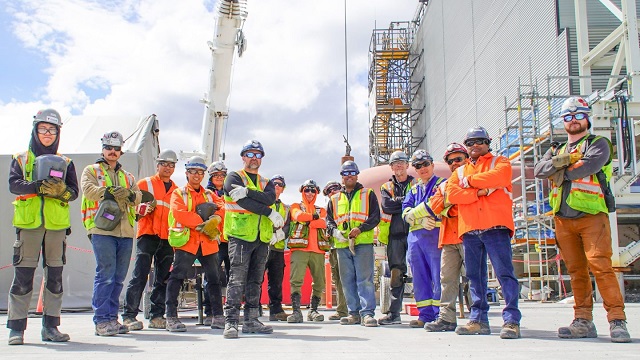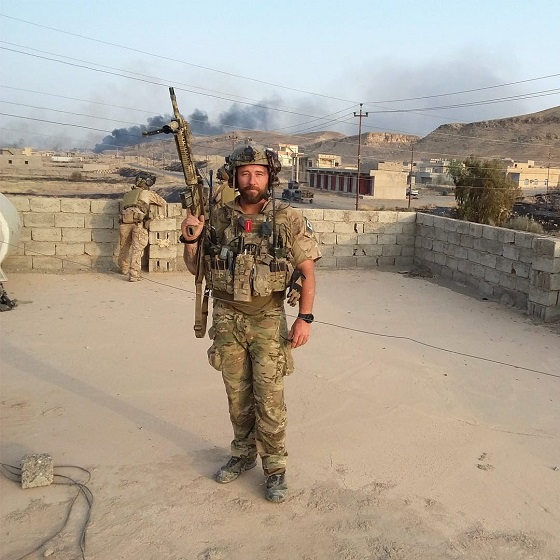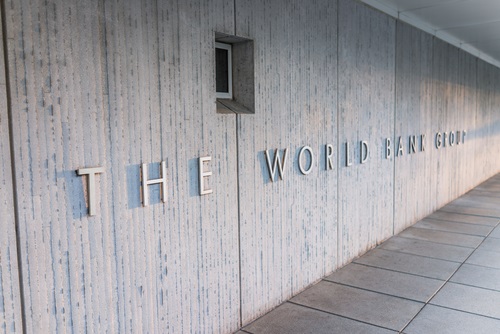Alberta
Any Downturn in Alberta’s Economy Would Inevitably Drag Canada’s Down With It

From the Frontier Centre for Public Policy
By Troy Media
Is anyone paying attention?
Canada is heading straight for an economic iceberg, and the rest of the country doesn’t seem to grasp the gravity of the situation. Alberta – long the engine of Canada’s prosperity thanks to its oil and gas sector – is facing a serious decline because the Trudeau government is obsessed with its net-zero policies. And if Alberta falters, the ripple effects will drag down the entire nation. But are we too preoccupied with federal climate targets to recognize the risks staring us in the face?
The Trudeau government’s push for net-zero emissions by 2050 may look noble on paper, but the real-world cost could be catastrophic. The numbers don’t lie: according to a recent column by Troy Media contributor Lennie Kaplan, Alberta’s oil production could drop by a staggering 54 percent by 2050. That’s not just a provincial problem; it’s a national economic emergency waiting to happen.
Let’s cut through the jargon. Alberta makes up about 15 percent of Canada’s GDP. If Alberta’s economy shrinks by $32 billion – as projected – it would trigger a 1.2 percent drop in Canada’s GDP. For context, that’s a multi-billion-dollar hole in a country whose economy is, itself, already in severe decline.
Does Ottawa think a shrinking economy will put us in a stronger position to innovate and grow? Or are they content with turning Alberta into a sacrificial lamb on the altar of climate policy, ignoring the fact that this will make Canada less competitive on the world stage?
Then there’s the job market. Alberta’s energy sector employs thousands and indirectly supports tens of thousands more across Canada. By 2050, again according to Kaplan, Alberta could shed 198,000 jobs – five percent of its workforce. These aren’t just oil rig workers; they’re engineers, construction crews, transport workers, and more.
It gets worse. When Alberta’s economy shrinks, industries from coast to coast that depend on Alberta’s vitality will also take a hit. If even 10 to 15 percent of those job losses trickle across the country, we’re looking at another 20,000 to 30,000 Canadians joining the unemployment line. Yet, where is the urgency to address this looming crisis?
Alberta isn’t just a provincial powerhouse – it’s also a major contributor to federal revenues. Between 2025 and 2050, the province’s contributions could drop by $221 billion due to declining oil and gas revenues. That’s less money for healthcare, infrastructure, and social programs from coast to coast.
For a federal government that already struggles to balance its books, the loss of up to $40 billion in federal tax contributions from Alberta is a fiscal disaster in the making. Where do they expect to make up that shortfall? Higher taxes? Slashed services? Or maybe another round of federal borrowing to kick the can down the road?
Alberta’s oil and gas isn’t just a provincial asset – it’s a critical part of Canada’s trade balance. In 2022, energy exports made up 20 percent of Canada’s total exports. Cut that by more than half, and you’re gutting Canada’s international trade position.
A $70 to 80 billion hit to export revenue could balloon the country’s trade deficit, further devaluing the Canadian dollar and making imports more expensive. In short, this isn’t just bad news for Alberta – it’s an economic calamity that could send shockwaves through every corner of the country.
And let’s not forget the federal equalization program. Alberta has long been a “have” province, contributing far more than it gets back. But if Alberta’s economy falters, it could soon be knocking on Ottawa’s door for handouts.
Imagine the political firestorm if Alberta becomes a “have-not” province, competing for federal support with the very provinces that have relied on its success. The strain on equalization could pit regions against each other, creating a toxic political environment when unity is more crucial than ever.
Does Ottawa even care?
Alberta’s decline isn’t just Alberta’s problem. It’s a Canadian problem. The Trudeau government’s climate obsession needs to take this into account. We cannot afford to sacrifice Alberta’s economic engine without dragging the rest of the country down with it.
What’s the plan to balance climate goals with economic reality? So far, there’s been little more than vague promises and short-term thinking. If Ottawa doesn’t wake up to the real-world consequences of Alberta’s decline, we’re all in for a harsh economic reckoning.
It’s time for our leaders to prioritize pragmatic solutions over virtue signalling. Because if Alberta goes down, the rest of Canada won’t be far behind.
First published here.
Troy Media is an editorial content provider to media outlets and its own hosted community news outlets across Canada.
Alberta
Early Success: 33 Nurse Practitioners already working independently across Alberta

Nurse practitioners expand primary care access |
The Alberta government’s Nurse Practitioner Primary Care program is showing early signs of success, with 33 nurse practitioners already practising independently in communities across the province.
Alberta’s government is committed to strengthening Alberta’s primary health care system, recognizing that innovative approaches are essential to improving access. To further this commitment, the Nurse Practitioner Primary Care Program was launched in April, allowing nurse practitioners to practise comprehensive patient care autonomously, either by operating their own practices or working independently within existing primary care settings.
Since being announced, the program has garnered a promising response. A total of 67 applications have been submitted, with 56 approved. Of those, 33 nurse practitioners are now practising autonomously in communities throughout Alberta, including in rural locations such as Beaverlodge, Coaldale, Cold Lake, Consort, Morley, Picture Butte, Three Hills, Two Hills, Vegreville and Vermilion.
“I am thrilled about the interest in this program, as nurse practitioners are a key part of the solution to provide Albertans with greater access to the primary health care services they need.”
To participate in the program, nurse practitioners are required to commit to providing a set number of hours of medically necessary primary care services, maintain a panel size of at least 900 patients, offer after-hours access on weekends, evenings or holidays, and accept walk-in appointments until a panel size reaches 900 patients.
With 33 nurse practitioners practising independently, about 30,000 more Albertans will have access to the primary health care they need. Once the remaining 23 approved applicants begin practising, primary health care access will expand to almost 21,000 more Albertans.
“Enabling nurse practitioners to practise independently is great news for rural Alberta. This is one more way our government is ensuring communities will have access to the care they need, closer to home.”
“Nurse practitioners are highly skilled health care professionals and an invaluable part of our health care system. The Nurse Practitioner Primary Care Program is the right step to ensuring all Albertans can receive care where and when they need it.”
“The NPAA wishes to thank the Alberta government for recognizing the vital role NPs play in the health care system. Nurse practitioners have long advocated to operate their own practices and are ready to meet the growing health care needs of Albertans. This initiative will ensure that more people receive the timely and comprehensive care they deserve.”
The Nurse Practitioner Primary Care program not only expands access to primary care services across the province but also enables nurse practitioners to practise to their full scope, providing another vital access point for Albertans to receive timely, high-quality care when and where they need it most.
Quick facts
- Through the Nurse Practitioner Primary Care Program, nurse practitioners receive about 80 per cent of the compensation that fee-for-service family physicians earn for providing comprehensive primary care.
- Compensation for nurse practitioners is determined based on panel size (the number of patients under their care) and the number of patient care hours provided.
- Nurse practitioners have completed graduate studies and are regulated by the College of Registered Nurses of Alberta.
- For the second consecutive year, a record number of registrants renewed their permits with the College of Registered Nurses of Alberta (CRNA) to continue practising nursing in Alberta.
- There were more than 44,798 registrants and a 15 per cent increase in nurse practitioners.
- Data from the Nurse Practitioner Primary Care Program show:
- Nine applicants plan to work on First Nations reserves or Metis Settlements.
- Parts of the province where nurse practitioners are practising: Calgary (12), Edmonton (five), central (six), north (three) and south (seven).
- Participating nurse practitioners who practise in eligible communities for the Rural, Remote and Northern Program will be provided funding as an incentive to practise in rural or remote areas.
- Participating nurse practitioners are also eligible for the Panel Management Support Program, which helps offset costs for physicians and nurse practitioners to provide comprehensive care as their patient panels grow.
Related information
Alberta
Province considering new Red Deer River reservoir east of Red Deer

Central Alberta reservoir study underway
Alberta’s government is moving forward a study to assess the feasibility of building a new reservoir on the Red Deer River to help support growing communities.
Demand for water from communities and businesses is increasing as more families, businesses and industries choose to live and work in central Alberta. The Red Deer River supplies water to hundreds of thousands of Albertans across the region and expanding water storage capacity could help reduce the risk of future droughts and meet the growing water demands.
Alberta’s government has now begun assessing the feasibility of building a potential new reservoir east of Red Deer near Ardley. A two-phase, multi-year study will explore the costs and value of constructing and operating the reservoir, and its impact on downstream communities, farmers and ranchers, and businesses.
“Central Alberta is a growing and thriving, and we are ensuring that it has the water it needs. This study will help us determine if an Ardley reservoir is effective and how it can be built and operated successfully to help us manage and maximize water storage for years to come.”
Reservoirs play a vital role in irrigation, drought management, water security and flood protection. Budget 2024 allocated $4.5 million to explore creating a new reservoir on the Red Deer River, at a damsite about 40 kilometres east of the City of Red Deer.
Work will begin on the scoping phase of the study as soon as possible. This will include reviewing available geotechnical and hydrotechnical information and exploring conceptual dam options. The scoping phase also includes meetings with municipalities and water users in the area to hear their views. This work is expected to be completed by December 2025.
“Reliable water infrastructure is essential for Alberta’s growing communities and industries. The Ardley reservoir feasibility study is a vital step toward ensuring long-term water security for central Alberta. As we assess this project’s potential, we’re supporting the sustainability of our economic corridors, agricultural operations and rural economy.”
“Water is essential to the agriculture industry and if the past few years are any indication, we need to prepare for dry conditions. A potential dam near Ardley could enhance water security and help farmers and ranchers continue to thrive in Alberta’s unpredictable conditions.”
Once that is complete, the feasibility study will then shift into a second phase, looking more closely at whether an effective new dam near Ardley can be safely designed and constructed, and the impact it may have on communities and the environment. Geotechnical and hydrotechnical investigations, cost-benefit analyses and an assessment of environmental and regulatory requirements will occur. The feasibility phase will also include gathering feedback directly from Albertans through public engagement. This work is expected to be completed by March 31, 2026.
Quick facts
- The Ardley dam scoping and feasibility study will be undertaken by Hatch Ltd., a Canadian multi-disciplinary professional services firm.
- Once the feasibility study is complete, government will assess the results and determine whether to pursue this project and proceed with detailed engineering and design work and regulatory approvals.
- Alberta’s government owns and operates several large reservoirs in the South Saskatchewan River Basin that help ensure sufficient water supply to meet demand from communities, irrigators and businesses, while also maintaining a healthy aquatic environment.
- Water stored at Gleniffer Lake, the reservoir created by Dickson Dam, helps supplement low winter flows along the Red Deer River and helps ensure an adequate water supply for Red Deer and Drumheller.
Related information
-

 Business1 day ago
Business1 day agoCarbon tax bureaucracy costs taxpayers $800 million
-

 Brownstone Institute1 day ago
Brownstone Institute1 day agoThe Most Devastating Report So Far
-

 ESG1 day ago
ESG1 day agoCan’t afford Rent? Groceries for your kids? Trudeau says suck it up and pay the tax!
-

 Daily Caller1 day ago
Daily Caller1 day agoLos Angeles Passes ‘Sanctuary City’ Ordinance In Wake Of Trump’s Deportation Plan
-

 John Stossel23 hours ago
John Stossel23 hours agoGreen Energy Needs Minerals, Yet America Blocks New Mines
-

 COVID-192 days ago
COVID-192 days agoDr. McCullough praises RFK Jr., urges him to pull COVID shots from the market
-

 Business2 days ago
Business2 days agoOttawa’s avalanche of spending hasn’t helped First Nations
-

 MAiD2 days ago
MAiD2 days agoOver 40% of people euthanized in Ontario lived in poorest parts of the province: government data






